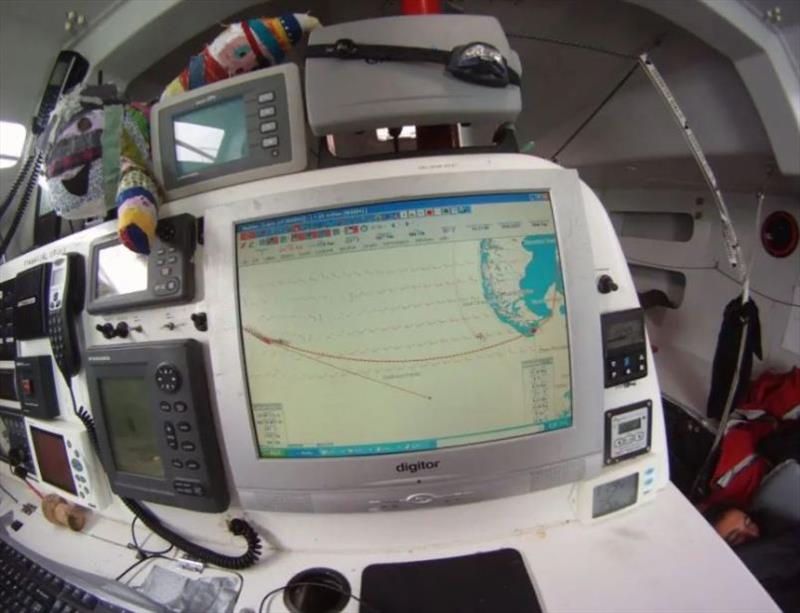
Global Solo Challenge: What is an AIS? An essential instrument for safety on a sailing boat
by Global Solo Challenge 4 Sep 2021 20:10 AEST

Chart table © Global Solo Challenge
The acronym AIS stands for Automatic Identification System. It is used by ships, pleasure boats and traffic control stations. The system allows information on the position of nearby ships and shore stations to be exchanged electronically.
The tool supplements the information provided by the RADAR which still remains the main anti-collision tool for commercial ships today. The radar watch with automatic MARPA mapping remains mandatory for large vessels.
However, for years AIS has become mandatory for ships over 300 tons. It is also rapidly spreading in pleasure craft, particularly among fishing boats and racing boats. Initially, receivers became popular, relatively cheap compared to instruments capable of receiving and transmitting. However, more and more offshore regattas have made it mandatory to have a transceiver. This is starting from Category 2 regattas according to the World Sailing classification.
Information transmitted
The AIS transmits and receives on dedicated VHF digital bands, on channels not selectable by the on-board radio. Each vessel or shore station equipped with a transmitter periodically sends accurate information about its position, speed and course. It also sends other useful data such as the type, size and name of the vessel, the number of MMSIs. For large ships, the destination, estimated time of arrival, type of cargo, etc. are also indicated.
This allows any boat equipped with a receiver to have all the information necessary to avoid collisions and much more. With the radar it is possible to identify another boat in situations of bad visibility. With AIS it is also possible to instantly determine its speed and course and, if there is a risk of collision. Consequently, who has the right of way according to the type of boat. Moreover, knowing its name, it will be possible to call via VHF or DSC digital channel using the MMSI number.
AIS class A, B and C
There are instruments of various classes based on functionality and scope. All commercial ships over 300 tonnes and all passenger ships are equipped with AIS of class A. These instruments transmit with very high frequency through a dedicated antenna and receive data from all types of AIS. These units have a system of prioritization of the transmission of navigation data. This ensures that if there are many ships in the same area, none of the signals overlap with others.
The system architecture manages up to 4500 stations in the same area. Class A must also be equipped with a dedicated display and a calculator that analyses the risk of collision with any other signal received.
Class B
On the smaller ships, on many fishing boats or on pleasure boats there are Class B instruments. These also transmit and receive but are less powerful than Class A. They are also not equipped with a prioritisation system for the transmission of navigation data. They can have a dedicated screen or they can provide information to be displayed on the chart plotter or laptop. The installation of class B units is very often voluntary but, as already specified, it has become mandatory for Category 2, 1 or zero regattas. For example the Rolex Fastnet, a Route du Rhum or the Vendee Globe respectively.
Continue reading the full article here...